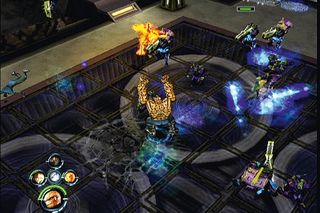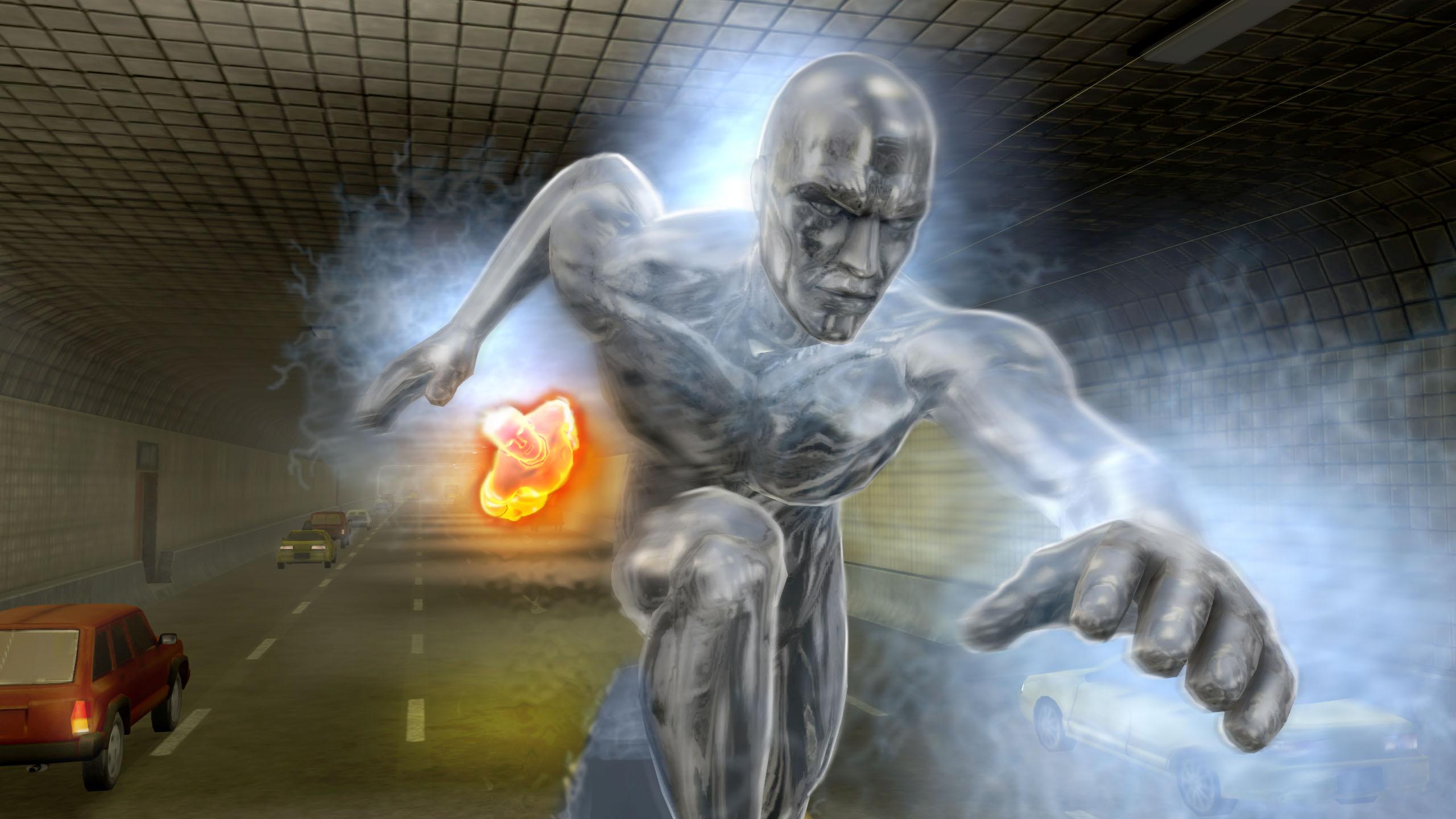GamesRadar+ Verdict
Pros
- +
Unlocking additional powers
- +
Playing as any of the Four
- +
A large cast of villains
Cons
- -
Repetitive combat
- -
Rooms that look the same
- -
Not much replayability
Why you can trust GamesRadar+
Comics and games are a combo right on par with popcorn at the movies, and Fantastic Four: Rise of the Silver Surfer is no exception. The game takes plot elements from the movie it's based on and the comic series to weave a story chucked full of Fantastic Four nemeses. Everyone from the Skrull to Terrax to, dum, dum, dummmm:the Silver Surfer makes an appearance. But instead of feeling like a universe encompassing rumble, it just feels like more enemies for The Thing to smash.
You'll begin the game in an underground Skrull stronghold, and after playing for about 15 minutes you'll have a full understanding of Skrull architectural theory: build a hallway, line it with various boxes, make sure to use plenty of guards, lock all the impermeable doors with nearby computer consoles and repeat.This would be okay, except the Skrull caves stretch on into hours of monotonous gameplay. Once you escape the caves, strangely, everyone from the military to ancient Tibetan monks happen to use the same principles of base design.

Marvel fans will noticethat the gameplay issimilar tothe X-Men Legends series, which was itself reminiscent of Diablo and pretty much everyarcade game in whichup to four playersbash the heads off everything in sight. You control one hero at a time and switch with the d-pad, while the AI or your friends control the others.
But it's not all just fists shoved into faces. To start with, each hero has a regular attack, a cosmic attack and a cosmic ability (the difference between a cosmic attack and a cosmic ability that is used to attack, we just don't know), and as they get kills and gain experience, additional attacks and more powerful cosmic things will be added to their skill sets. Having the heroes evolve and expand on their unique powers keeps gives you a bit more incentive to try to kill just one more guy, and sets theheroesapart from their next-gen system counterparts who start the game with all their abilities fully loaded.Unfortunately, in both versions of the gameall theuseful powers arereally just different animations that accomplish the same thing: destroy lots of bad guys.
The basic grunts are fairly easy to take out using standard attacks, but before long you'll be facing large numbers of them, and the trick becomes unleashing cosmic powers/abilities/semantics at the appropriate times to allow for maximum Fantastic whoopage and time to build cosmic charge back up by dispatching baddies. The formula is fun, but too repetitive. Different pathways through levels give you some reason to replay the adventure - another reason we liked this more than the PS3 version, but rooms look so similar thatit's probably not enough reason for all but the most stalwart Fantastic Four fans.
More info
| Genre | Action |
| Description | There's got to be some still-unused joke about this crappy action game being less than "fantastic," but the game's just too lukewarm to inspire one. |
| Platform | "DS","PS2","PS3","PSP","Wii","Xbox","Xbox 360","PC" |
| US censor rating | "Everyone 10+","Everyone 10+","Everyone 10+","Everyone 10+","Everyone 10+","Everyone 10+","Everyone 10+","Everyone 10+" |
| UK censor rating | "","","","","","","","" |
| Release date | 1 January 1970 (US), 1 January 1970 (UK) |
There's always time to make your PS5 backlog worse now that Dragon Age The Veilguard has dropped back to its lowest ever price
New Sonic 3 concept art may have spoiled what Metal Sonic will get up to next in Sonic 4 – and it could involve Eggman and time travel

As some analysts "hope" GTA 6 will normalize $100 games, one Baldur's Gate 3 dev points out that "prices haven't risen with inflation"
Most Popular

